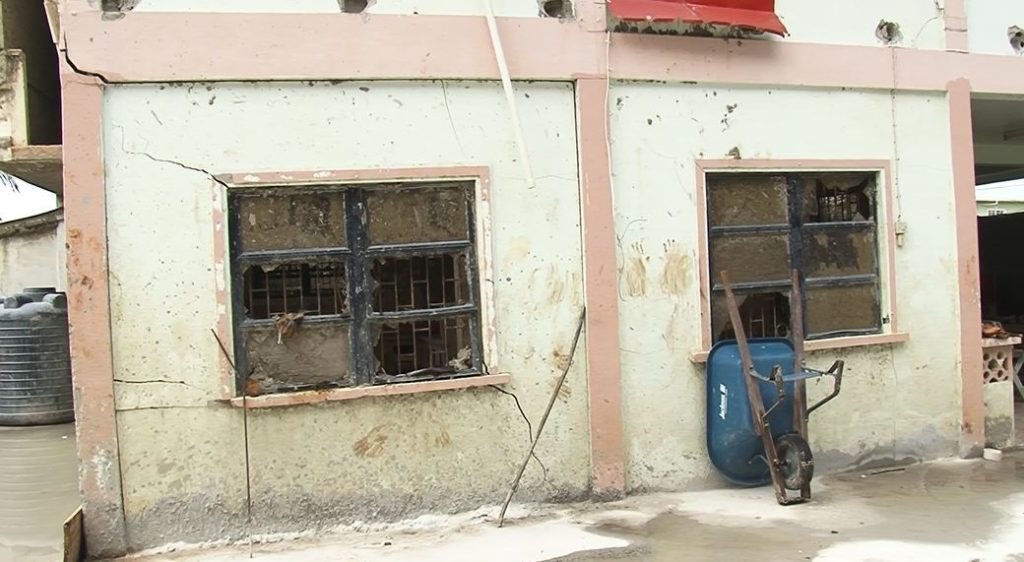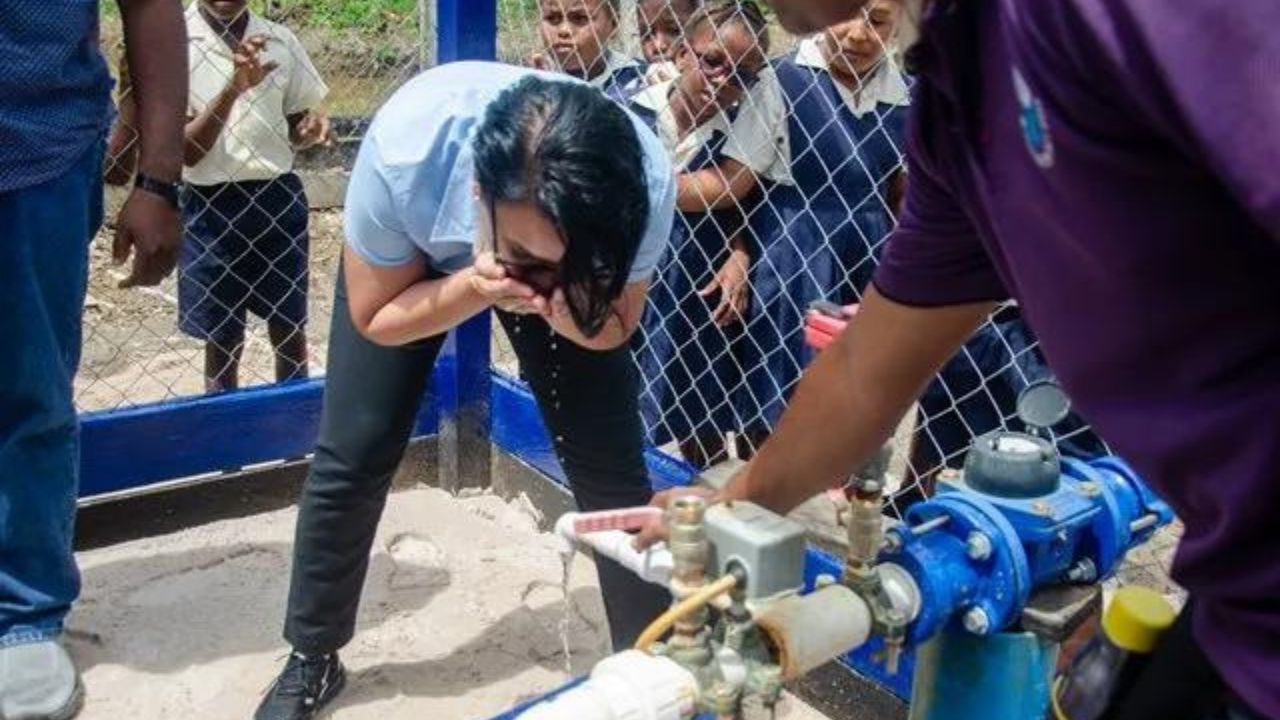Six months after exploding, Engineers from the Guyana Geology and Mines Commission (GGMC) have completed the recapping of a Gas Well at the Diamond/Grove New Housing Scheme, East Bank Demerara (EBD).
During a visit to the location on Tuesday, Senior Petroleum Technologist attached to the GGMC, Mitchell Prince told the News Room that approximately $30M has been spent on recapping the Well.
The project entailed the installation of an eight feet tank to trap the gas, separators and pipes leading from the ground to the tank and other equipment.

Prince noted that it is now for the authorities to determine the future use of the gas which can generate electricity or be used for cooking.
“I know it can be used for cooking, it can be used for running
The Well at Sixth Avenue, Diamond/Grove New Housing Scheme, erupted in June when a businessman, Soownauth Gorakh known as “
The Well, which was active for a number of days, again erupted in August, a short distance away from the first explosion.
The explosion sent mud, water and other sediments into the air, causing damages not only to Gorakh’s property but also to surrounding buildings.
The explosion is similar to one which occurred in 2009 when the natural gas exploded a short distance away, at a house located at Second Bridge, Grove.

At that location, the GGMC was able to trap the natural gas to provide free cooking gas to the family.
However, in this case, the destruction was much worst, forcing the homeowner and his family to abandon the building.
In fact, the Petroleum Technologist on Tuesday told the News Room that he would advise against occupying the home due to “gas fumes” in the facility.
He averaged this year’s discovery to be five times what was discovered in 2009.
The Petroleum Technologist disclosed that results received some three weeks ago revealed that there is no hydrogen-sulphide in the gas to cause discomfort to other residents.
Hydrogen-sulphide is a highly flammable gas with the scent commonly associated with ‘rotten eggs.’
The GGMC has not yet determined the real reason for the explosion.
However, given the proximity of the 2009 explosion to that of the 2018 site, Prince believes that the natural gas which a study found to be pure methane, was formed through the degradation of items used to fill trenches in the residential area which was once a sugar cane plantation.
“We know that the area is supposed to be gas prone from examples that happened before and it is my opinion, no geological tests has been done, that it would have likely been some river bed or creek bed that would have passed through the area and been filled in and the buried material turned into the bio gas,” he explained.
Prince noted that it is hard to do a full seismic investigation since the area is a residential one.
As such, he is urging other residents to desist from drilling any Wells or other similar facilities.






